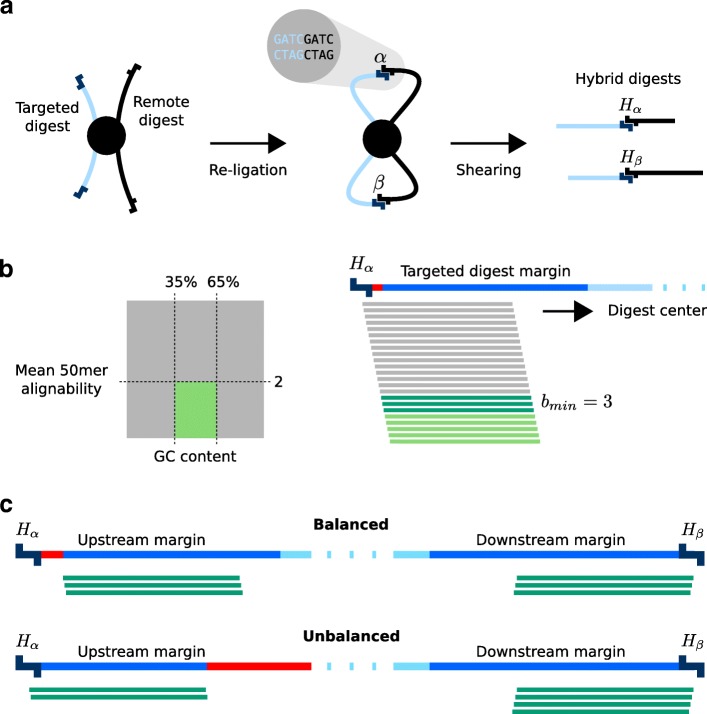Fig. 2.
Selection of probes and digests. (a) Idealized example of two cross-linked digests from a targeted region (light blue) and a remote interacting region (black). Re-ligation and shearing results in two hybrid digests Hα and Hβ consisting of DNA from the targeted and a remote region. (b) We assume that the average length of the two parts corresponds to half of the average fragment length of sheared DNA in total. Therefore, only the margins of digests are defined to be target regions (blue). By default, GOPHER uses a margin size of 250 bp. For selection of usable probes only the uniqueness (alignability) of the probe sequence and GC content are taken into account. By default, usable probes are defined as those that have a mean 50mer alignability ≤ 2 and a GC content between 35 and 65% (light green area within square). GOPHER starts at the outermost end of targeted digests, moves towards the center and selects the first bmin usable probes (dark green). Regions for which no usable probes can be selected are depicted in red. (c) If bmin usable probes can be placed within each margin of a given digest, the digest is here referred to as balanced. Otherwise, if 2·bmin probes can be placed in both margins but with unequal numbers in the two margins, the digest is referred to as unbalanced. By default, GOPHER selects balanced digests only, and unbalanced digests can be manually selected after viewpoint creation, but if desired users can allow GOPHER to select unbalanced digests if no balanced digest can be found

